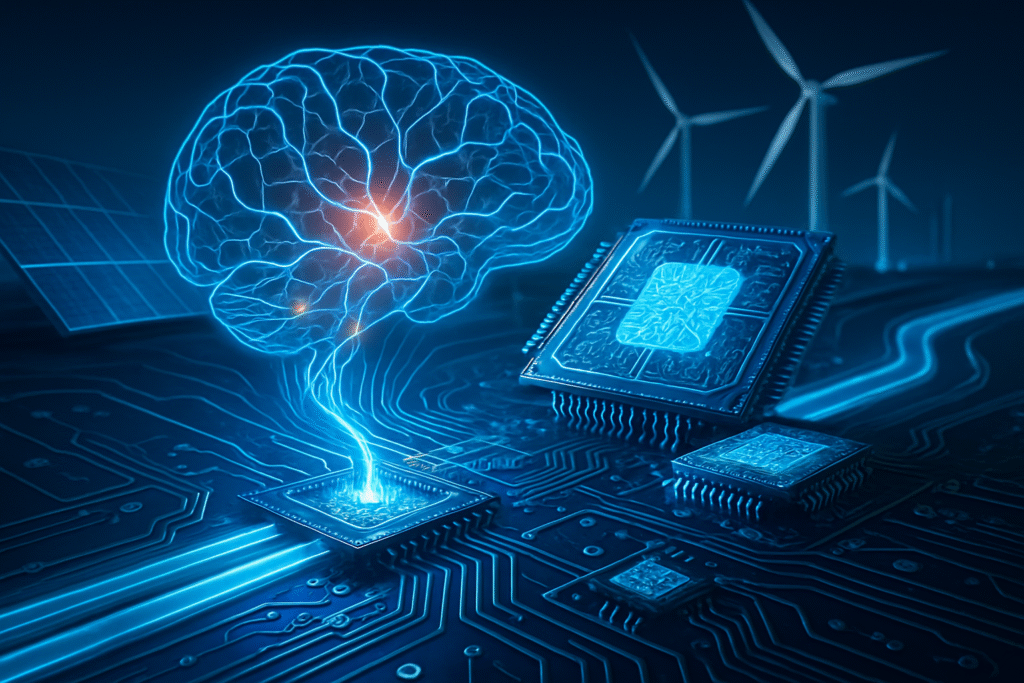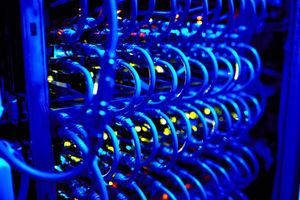
The meteoric rise of artificial intelligence, particularly large language models and sophisticated deep learning applications, has ignited a parallel, often overlooked, crisis: an unprecedented surge in energy consumption. This insatiable appetite for power, coupled with the intricate and resource-intensive processes of advanced chip manufacturing, presents a formidable challenge to the tech industry's sustainability goals. Addressing this "AI Power Paradox" is no longer a distant concern but an immediate imperative, dictating the pace of innovation, the viability of future deployments, and the environmental footprint of the entire digital economy.
As AI models grow exponentially in complexity and scale, the computational demands placed on data centers and specialized hardware are skyrocketing. Projections indicate that AI's energy consumption could account for a staggering 20% of the global electricity supply by 2030 if current trends persist. This not only strains existing energy grids and raises operational costs but also casts a long shadow over the industry's commitment to a greener future. The urgency to develop and implement energy-efficient AI chips and sustainable manufacturing practices has become the new frontier in the race for AI dominance.
The Technical Crucible: Engineering Efficiency at the Nanoscale
The heart of AI's energy challenge lies within the silicon itself. Modern AI accelerators, predominantly Graphics Processing Units (GPUs) and Application-Specific Integrated Circuits (ASICs), are power behemoths. Chips like NVIDIA's (NASDAQ: NVDA) Blackwell, AMD's (NASDAQ: AMD) MI300X, and Intel's (NASDAQ: INTC) Gaudi lines demand extraordinary power levels, often ranging from 700 watts to an astonishing 1,400 watts per chip. This extreme power density generates immense heat, necessitating sophisticated and equally energy-intensive cooling solutions, such as liquid cooling, to prevent thermal throttling and maintain performance. The constant movement of massive datasets between compute units and High Bandwidth Memory (HBM) further contributes to dynamic power consumption, requiring highly efficient bus architectures and data compression to mitigate energy loss.
Manufacturing these advanced chips, often at nanometer scales (e.g., 3nm, 2nm), is an incredibly complex and energy-intensive process. Fabrication facilities, or 'fabs,' operated by giants like Taiwan Semiconductor Manufacturing Company (TSMC) (NYSE: TSM) and Samsung Foundry, consume colossal amounts of electricity and ultra-pure water. The production of a single complex AI chip, such as AMD's MI300X with its 129 dies, can require over 40 gallons of water and generate substantial carbon emissions. These processes rely heavily on precision lithography, etching, and deposition techniques, each demanding significant power. The ongoing miniaturization, while crucial for performance gains, intensifies manufacturing difficulties and resource consumption.
The industry is actively exploring several technical avenues to combat these challenges. Innovations include novel chip architectures designed for sparsity and lower precision computing, which can significantly reduce the computational load and, consequently, power consumption. Advanced packaging technologies, such as 3D stacking of dies and HBM, aim to minimize the physical distance data travels, thereby reducing energy spent on data movement. Furthermore, researchers are investigating alternative computing paradigms, including optical computing and analog AI chips, which promise drastically lower energy footprints by leveraging light or continuous electrical signals instead of traditional binary operations. Initial reactions from the AI research community underscore a growing consensus that hardware innovation, alongside algorithmic efficiency, is paramount for sustainable AI scaling.
Reshaping the AI Competitive Landscape
The escalating energy demands and the push for efficiency are profoundly reshaping the competitive landscape for AI companies, tech giants, and startups alike. Companies like NVIDIA, which currently dominates the AI accelerator market, are investing heavily in designing more power-efficient architectures and advanced cooling solutions. Their ability to deliver performance per watt will be a critical differentiator. Similarly, AMD and Intel are aggressively pushing their own AI chip roadmaps, with a strong emphasis on optimizing energy consumption to appeal to data center operators facing soaring electricity bills. The competitive edge will increasingly belong to those who can deliver high performance with the lowest total cost of ownership, where energy expenditure is a major factor.
Beyond chip designers, major cloud providers such as Amazon (NASDAQ: AMZN) Web Services, Microsoft (NASDAQ: MSFT) Azure, and Google (NASDAQ: GOOGL) Cloud are at the forefront of this challenge. They are not only deploying vast arrays of AI hardware but also developing their own custom AI accelerators (like Google's TPUs) to gain greater control over efficiency and cost. These hyperscalers are also pioneering advanced data center designs, incorporating liquid cooling, waste heat recovery, and renewable energy integration to mitigate their environmental impact and operational expenses. Startups focusing on AI model optimization, energy-efficient algorithms, and novel hardware materials or cooling technologies stand to benefit immensely from this paradigm shift, attracting significant investment as the industry seeks innovative solutions.
The implications extend to the entire AI ecosystem. Companies that can develop or leverage AI models requiring less computational power for training and inference will gain a strategic advantage. This could disrupt existing products or services that rely on energy-intensive models, pushing developers towards more efficient architectures and smaller, more specialized models. Market positioning will increasingly be tied to a company's "green AI" credentials, as customers and regulators demand more sustainable solutions. Those who fail to adapt to the efficiency imperative risk being outcompeted by more environmentally and economically viable alternatives.
The Wider Significance: A Sustainable Future for AI
The energy demands of AI and the push for manufacturing efficiency are not isolated technical challenges; they represent a critical juncture in the broader AI landscape, intersecting with global sustainability trends, economic stability, and ethical considerations. Unchecked growth in AI's energy footprint directly contradicts global climate goals and corporate environmental commitments. As AI proliferates across industries, from scientific research to autonomous systems, its environmental impact becomes a societal concern, inviting increased scrutiny from policymakers and the public. This era echoes past technological shifts, such as the internet's early growth, where infrastructure scalability and energy consumption eventually became central concerns, but with a magnified urgency due to climate change.
The escalating electricity demand from AI data centers is already straining electrical grids in various regions, raising concerns about capacity limits, grid stability, and potential increases in electricity costs for businesses and consumers. In some areas, the sheer power requirements for new AI data centers are becoming the most significant constraint on their expansion. This necessitates a rapid acceleration in renewable energy deployment and grid infrastructure upgrades, a monumental undertaking that requires coordinated efforts from governments, energy providers, and the tech industry. The comparison to previous AI milestones, such as the ImageNet moment or the rise of transformers, highlights that while those breakthroughs focused on capability, the current challenge is fundamentally about sustainable capability.
Potential concerns extend beyond energy. The manufacturing process for advanced chips also involves significant water consumption and the use of hazardous chemicals, raising local environmental justice issues. Furthermore, the rapid obsolescence of AI hardware, driven by continuous innovation, contributes to a growing e-waste problem, with projections indicating AI could add millions of metric tons of e-waste by 2030. Addressing these multifaceted impacts requires a holistic approach, integrating circular economy principles into the design, manufacturing, and disposal of AI hardware. The AI community is increasingly recognizing that responsible AI development must encompass not only ethical algorithms but also sustainable infrastructure.
Charting the Course: Future Developments and Predictions
Looking ahead, the drive for energy efficiency in AI will catalyze several transformative developments. In the near term, we can expect continued advancements in specialized AI accelerators, with a relentless focus on performance per watt. This will include more widespread adoption of liquid cooling technologies within data centers and further innovations in packaging, such as chiplets and 3D integration, to reduce data transfer energy costs. On the software front, developers will increasingly prioritize "green AI" algorithms, focusing on model compression, quantization, and sparse activation to reduce the computational intensity of training and inference. The development of smaller, more efficient foundation models tailored for specific tasks will also gain traction.
Longer-term, the industry will likely see a significant shift towards alternative computing paradigms. Research into optical computing, which uses photons instead of electrons, promises ultra-low power consumption and incredibly fast data transfer. Analog AI chips, which perform computations using continuous electrical signals rather than discrete binary states, could offer substantial energy savings for certain AI workloads. Experts also predict increased investment in neuromorphic computing, which mimics the human brain's energy-efficient architecture. Furthermore, the push for sustainable AI will accelerate the transition of data centers and manufacturing facilities to 100% renewable energy sources, potentially through direct power purchase agreements or co-location with renewable energy plants.
Challenges remain formidable, including the high cost of developing new chip architectures and manufacturing processes, the need for industry-wide standards for measuring AI's energy footprint, and the complexity of integrating diverse energy-saving technologies. However, experts predict that the urgency of the climate crisis and the economic pressures of rising energy costs will drive unprecedented collaboration and innovation. What experts predict will happen next is a two-pronged attack: continued hardware innovation focused on efficiency, coupled with a systemic shift towards optimizing AI models and infrastructure for minimal energy consumption. The ultimate goal is to decouple AI's growth from its environmental impact, ensuring its benefits can be realized sustainably.
A Sustainable AI Horizon: Key Takeaways and Future Watch
The narrative surrounding AI has largely focused on its astonishing capabilities and transformative potential. However, a critical inflection point has arrived, demanding equal attention to its burgeoning energy demands and the sustainability of its underlying hardware manufacturing. The key takeaway is clear: the future of AI is inextricably linked to its energy efficiency. From the design of individual chips to the operation of vast data centers, every aspect of the AI ecosystem must be optimized for minimal power consumption and environmental impact. This represents a pivotal moment in AI history, shifting the focus from merely "can we build it?" to "can we build it sustainably?"
This development's significance cannot be overstated. It underscores a maturation of the AI industry, forcing a confrontation with its real-world resource implications. The race for AI dominance is now also a race for "green AI," where innovation in efficiency is as crucial as breakthroughs in algorithmic performance. The long-term impact will be a more resilient, cost-effective, and environmentally responsible AI infrastructure, capable of scaling to meet future demands without overburdening the planet.
In the coming weeks and months, watch for announcements from major chip manufacturers regarding new power-efficient architectures and advanced cooling solutions. Keep an eye on cloud providers' investments in renewable energy and sustainable data center designs. Furthermore, observe the emergence of new startups offering novel solutions for AI hardware efficiency, model optimization, and alternative computing paradigms. The conversation around AI will increasingly integrate discussions of kilowatt-hours and carbon footprints, signaling a collective commitment to a sustainable AI horizon.
This content is intended for informational purposes only and represents analysis of current AI developments.
TokenRing AI delivers enterprise-grade solutions for multi-agent AI workflow orchestration, AI-powered development tools, and seamless remote collaboration platforms.
For more information, visit https://www.tokenring.ai/.







